|
On the morning of August 21, 1890, Christopher C. Shayne, director and founder of the Manufacturing Furriers’ Association of New York City, future president of the New York merchant’s association, opened his mail and received a warning. “Whereas, The organized workingmen of the world are endeavoring to improve their condition and especially struggling to reduce hours of work, and in consideration that our working hours are not at present serving to improve our station in life, and as we are convinced that only by successive reduction of working hours our rights will be obtained. We demand that from Sept. 2, 1900, nine hours shall constitute a working day.” New York and much of the United States were in the throes of a widespread union movement to gradually reduce the standard working day to 8 hours. For over four years, the Furriers’ Union had been agitating towards shorter work days and were now ready to take labor actions to press their demands. Shayne was not even slightly sympathetic. He argued that furriers rarely worked more than 10 hour days and had a paid half-holiday every Saturday, as well as paid official holidays. C.C. Shayne suggested that if the union were willing to give up paid holidays, the Association would be willing to limit work hours to 9 hour days. Being a skilled trade, it's possible that a furriers' workweek was only 65 hours as Shayne had claimed but the average workweek for a manufacturing employee was 100 hours and the movement to reduce hours was sweeping the United States and Britain. Their logo was eight hours for work, eight hours for sleep, eight hours for what you will. Within a few months, the Association members would lock-out the Furriers’ Union members and employ strikebreakers. One of the locked-out furriers was Rudolf Bernegger, my wife's 2nd great grandfather, who had arrived in New York from Switzerland 10 years earlier, in December 1880. Rudolf was born on March 16, 1856 and confirmed in the Catholic faith on May 29, 1872, at the age of 16. According to his confirmation certificate, he was confirmed in the municipality of Altstädten. This created some confusion for me about where he was living at the time, since the only Altstädten is a small town in southern Germany, with no similarly named location in Switzerland. However, after painfully parsing some old Swiss books, I've learned that Altstätten in the canton of St. Gallen was once called Altstädten. Altstädt is the German word for "old town". Since Swiss German has diverged pretty significantly from "High" German, the name of the city likely changed as well. NOTE: if some Swiss speaker would care to verify or correct me, I'd be grateful! Having looked through the scarce old Swiss census data available online, I'd long suspected that Berneggers hailed from St. Gallen and this (hopefully) confirms it. Around 1879, Rudolf married Anna Ursula Ackermann and on March 3. 1880, Anna gave birth to Johann Rudolf Bernegger. A later record claims he was born in Winkel, which is a small town in the shadow the Alps in the canton of Zurich, in the northern part of the county. A small, mountainous nation, Switzerland had little agricultural land so frequent economic recessions made it challenging for its growing population to find enough to eat. During these times, such as the decade starting in 1880, local councils might offer families as much as 400 Swiss francs to emigrate to the New World. In 1880, travel agencies heavily advertised packages to New York. Such a package would transport the aspiring emigrant to Le Havre, France, and provide an 8 day steamship passage across the Atlantic. This journey would absorb almost all the money offered by the local councils, so a New York immigrant would have to find work quickly. A young man, Rudolf may have taken such an offer to emigrate to the United States. In any event, he soon set off to the new world. Rudolf travelled alone to New York, Given the high expense of travel, his wife and son may have had to remain in Switzerland until Rudolf secured a home for the family and had saved enough money to pay for their passage. On arriving in New York, Rudolf quickly became friends with Frank Casper and Julius Haffke, fellow furriers who had migrated from Germany, and Joseph Studli, an embroiderer from Switzerland. It's possible that these four men lived and worked together when they first arrived. All had immigrated to the United States within a few weeks of each other and vouched for one another when they all became naturalized citizens in 1886. Anna and Johann (now John) rejoined Rudolf in 1881 and the family settled in the East Village. In the mid-19th century, the East Village was part of a large community known as Deutschländle, or “Dutch Town”, home to 50,000 German-speaking immigrants of Dutch, Prussian, Bavarian, and Swiss ancestry. The neighbourhood had German schools,churches, synagogues, theatres, beer halls, oyster saloons, and groceries. On August 8, 1882, Anna gave birth to their second son, Geörg. Tragically, Geörg died soon after he was born. Rudolf and his family moved frequently around the East Side for the next 20 years. In 1883, they lived at 142 Essex St., not far from where the Brooklyn Bridge was being completed. In 1884, they moved to 196 2nd Street and in 1886, they moved to 199 East 8th Street. In 1890, at the time of the Furriers’ Union lockout, the Berneggers were living at 25 Rivington Street. in the lower East Side and were parents to their 3rd child, and my wife’s great grandfather, Edward Charles Bernegger, who was born the 14th of June, 1890. On February 26, 1891, the furriers’ began to strike across New York, which was soon followed by a lockout by all the businesses belonging to the association. With a young family, including a newborn son, Rudolf would have been out of work. However, it was likely that he was an enthusiastic participant in the labour action. By April, 1892, Furriers' Manufacturers Association were unable to find workers and suffered financial losses so were close to ending their lock-out and meeting the Union's demands. With victory at hand, the Union held a general meeting and elected new officers, including elevating Rudolf to Financial Secretary. As financial secretary, Rudolf would handle the financial responsibilities of the union, receiving and depositing money and keeping the books. Clearly, Rudolf had a good education back in Switzerland, beyond that of a furrier, and was well-trusted within his organization. As the 19th century came to a close, Rudolf continued to frequently move around the East Village; almost every census and directory has him living in a different apartment. Not only was the frequency of the family relocations odd but it was unusual that they stayed in the East Village. German-speaking immigrants were moving out of the community in large numbers as they grew more affluent, to be replaced by East European immigrants, including a significant number of Ashkenazi Jews, such as Isidore and Sadie Tabor, whose granddaughter would marry Rudolf's and Anna's grandson. The reason for Rudolf's frequent moves and his staying in the area might have had to do with his work. Jewish immigrants became heavily involved in the "needle trades", including furs, and Rudolf would have found plenty of work there. Around 1910, the Bernegger family finally moved out of the East Village to an apartment at 163 Southern Boulevard in the south Bronx, where they rented an apartment. Rudolf continue to work as a Furrier, selling furs from his own shop for several years. Rudolf and Anna experienced many events during their years in the Bronx. During World War I, German saboteurs detonated two million pounds of American-made munitions, casting suspicion on the German-speaking community. After the war, in 1918, Rudolf and Anna may have attended the Bronx World Fair, which was small and generally regarded as a failure, as most countries were still recovering from the war and only Brazil actually showed up. However, the park became a very popular spot for the locals. Rudolf and Anna lived in their Bronx apartment until their deaths, the longest they ever lived anywhere since their childhoods; Rudolf passing at 8:35PM on April 22, 1930 and Anna passing at 11:20PM on November 10, 1934. John moved out on his own before Rudolf and Anna moved to the Bronx, working as the head bartender at the Hotel Belmont. He married Kathryn E Curley around 1906 and had at least 2 children: Kathryn Elizabeth Bernegger and Edward Lloyd Bernegger. Kathryn moved to Pittsburgh, where she married and was a very popular social figure and businesswoman. Lloyd was a very successful executive. Edward moved out to the Bronx with his parents to the Bronx, moving out on his own after 1915. Edward inherited his father's financial acumen and became a successful accountant, working for a commercial glassware company. He married Agnes Frank and had a single child, Joseph Harold Bernegger, on December 2, 1915, Edward and Agnes moved Ridgewood, Queens where they rented a house at 54-45 Catalpa Avenue, where they lived for several years. Edward was Dictator of the Ridgewood Lodge of Moose and he and Anna were both very active with the group. Their son, my wife's maternal grandfather, Joe, grew up in Ridgewood, only a few blocks from his future wife, Ethel Tenure. Following in his father's footsteps, he went to New York University, School of Commerce, Accounts, and Finance, received a Bachelor of Science on June 7, 1939, and became an accomplished tax accountant. After completing his degree, he married Ethel on November 11, 1939 and they had 4 children together: Joan, Linda, Edward, and Douglas. Joe worked for the FBI and then became a successful vice president and CFO of Lipton Tea. Rudolf and Anna lived the classic American immigration story: pick up and leave everything behind, plunge headlong into American life and politics in one of the most dynamic cities of the era, and raise a family that prospers and thrives for generations into the future.
Comments are closed.
|
Archives
2023 JAN FEB MAR APR MAY JUN JUL AUG SEP 2022 JAN FEB MAR APR MAY JUN JUL AUG SEP OCT NOV DEC 2021 JAN FEB MAR APR MAY JUN JUL AUG SEP OCT NOV DEC 2020 JAN FEB MAR APR MAY JUN JUL AUG SEP OCT NOV DEC 2019 JAN FEB MAR APR MAY JUN JUL AUG SEP OCT NOV DEC 2018 JAN FEB MAR APR MAY JUN JUL AUG SEP OCT NOV DEC 2017 JAN FEB MAR APR MAY JUN JUL AUG SEP OCT NOV DEC 2016 JAN FEB MAR APR MAY JUN JUL AUG SEP OCT NOV DEC 2015 JAN FEB MAR APR MAY JUN JUL AUG SEP OCT NOV DEC 2014 OCT NOV DEC Categories |
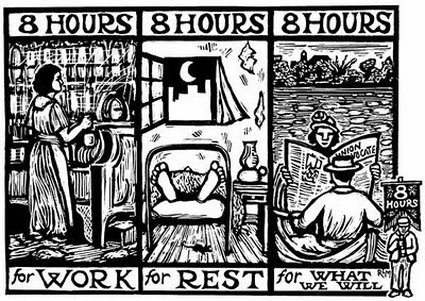
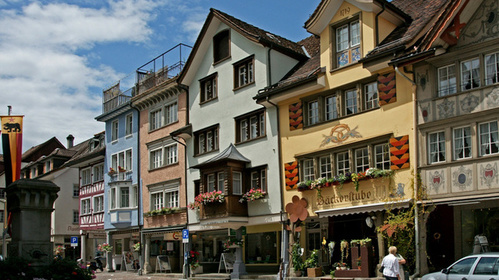
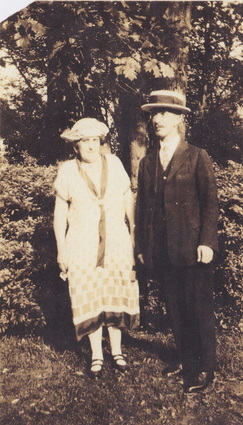
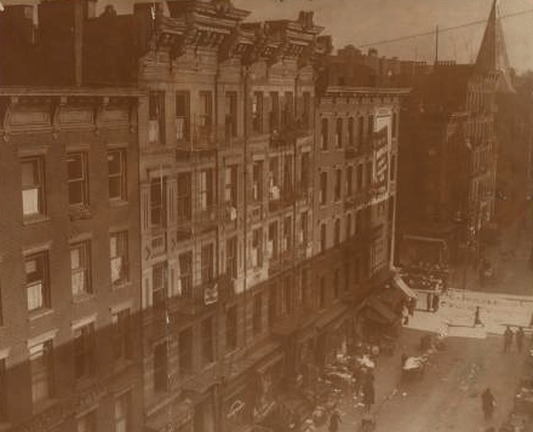
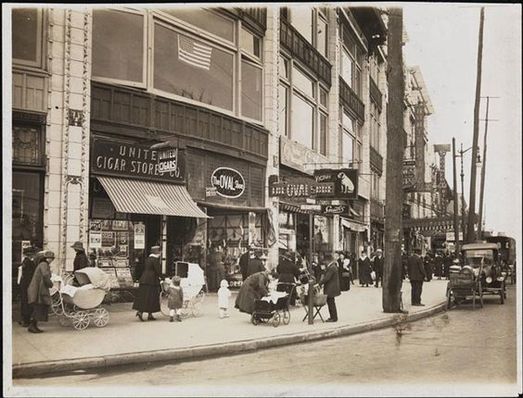
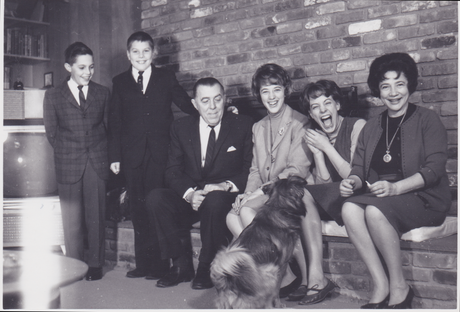
 RSS Feed
RSS Feed